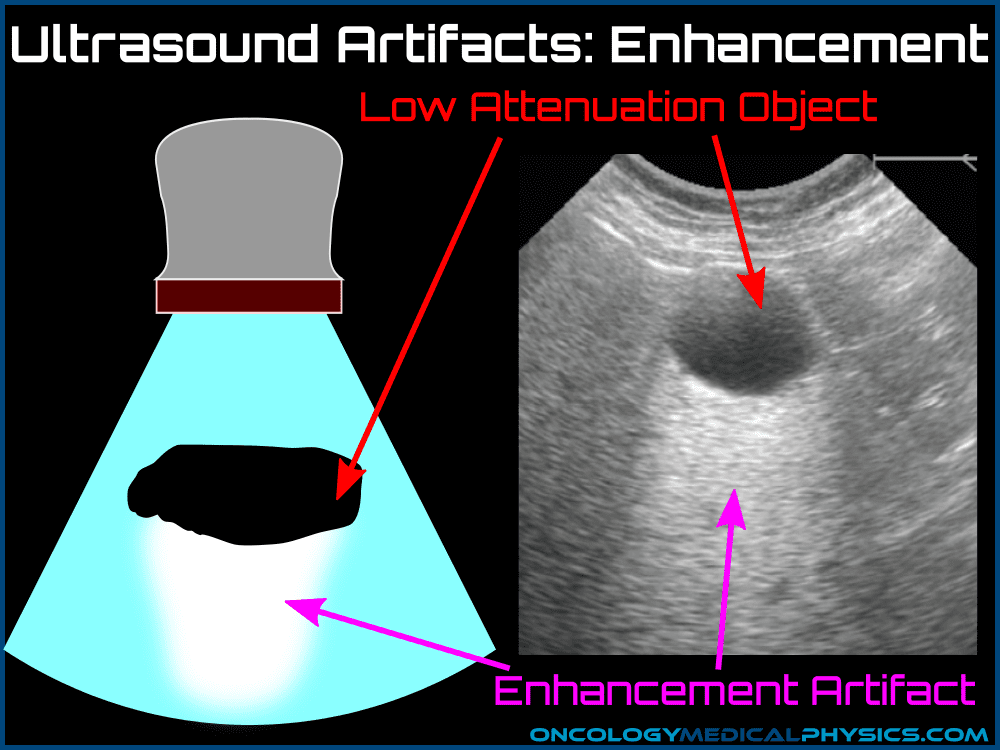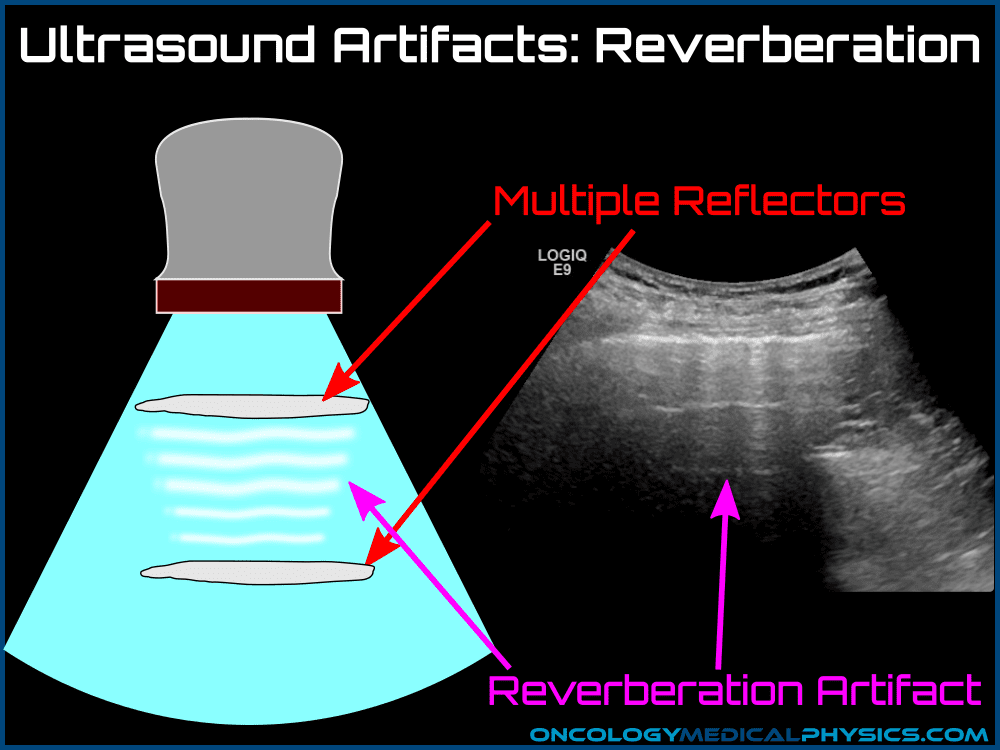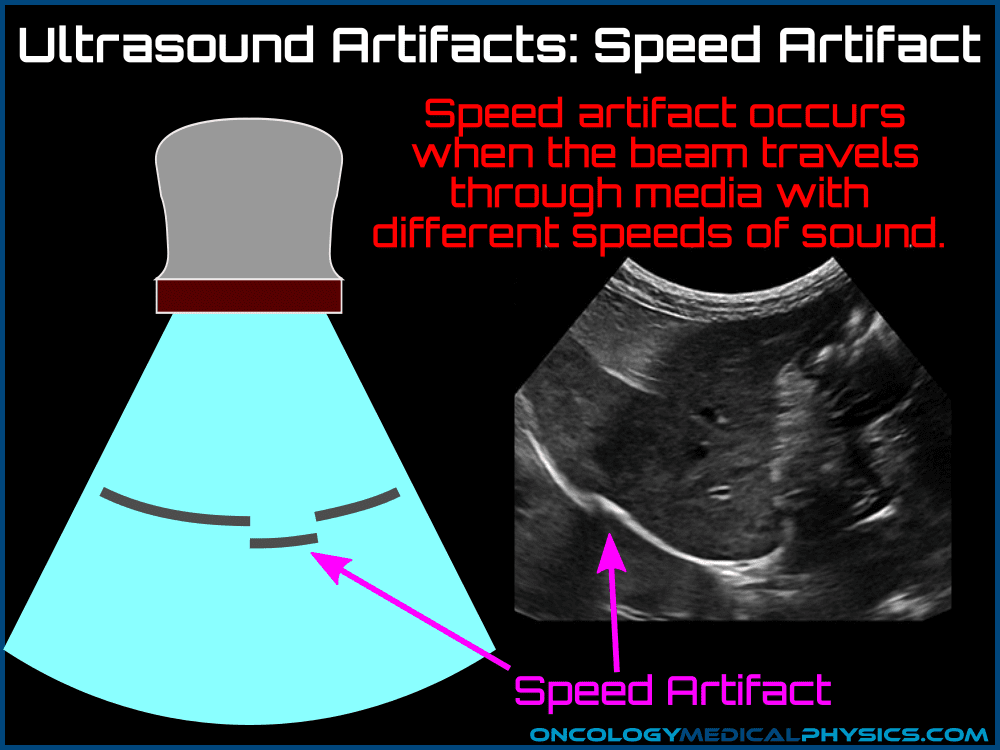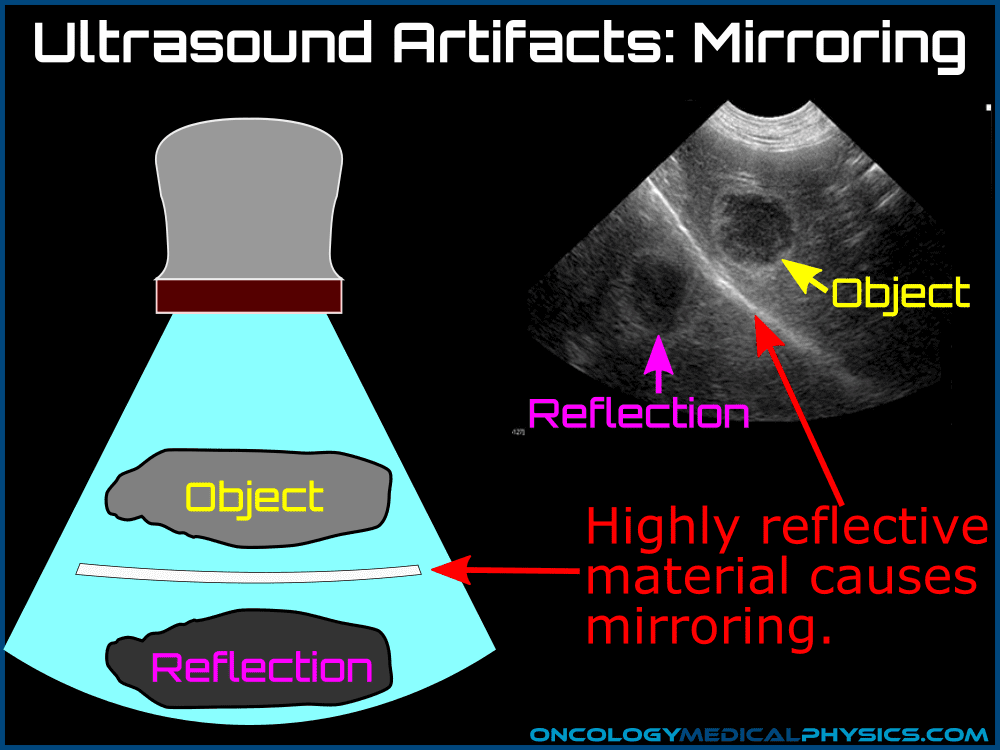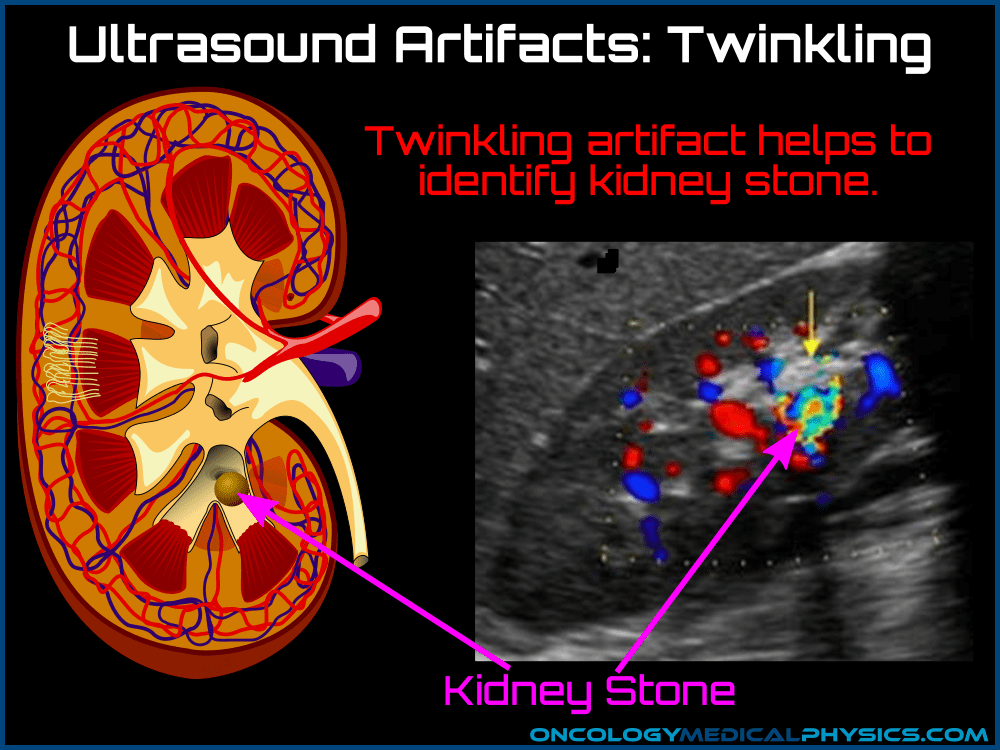Common Ultrasound Artifacts
Mis-mapping
Appearance: The image displays an incorrect location of an object.
Cause: Refraction due to variations in the speed of sound at the interface of the tissues causes displacement of the returning echoes.
Side-lobe energy emission
Appearance: Often manifests itself as an apparent signal which disappears when the transducer orientation is rotated.
Cause: Anatomy outside of the beam is mapped into the main beam.
Navigation
Not a Member?
Sign up today to get access to hundreds of ABR style practice questions.


